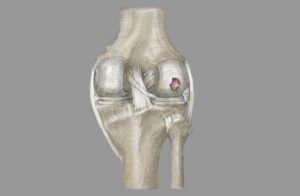In the complex landscape of healthcare, accurate and timely claims submission is a crucial aspect that can significantly impact the financial health of both healthcare providers and insurance companies. Navigating the intricate web of medical coding, documentation, and compliance requirements demands a strategic approach. In this comprehensive guide, we will delve into the intricacies of claims submission, exploring the key steps that ensure accuracy and timeliness.
Understanding the Importance of Claims Submission:
Before we embark on the journey of mastering claims submission, it’s essential to comprehend its significance. Timely and accurate claims submission is not merely a procedural requirement; it directly influences the revenue cycle of healthcare providers. Delayed or inaccurate submissions can lead to claim denials, payment delays, and increased administrative costs. Therefore, adopting a proactive approach to claims submission is paramount for financial sustainability in the healthcare industry.
Step 1: Thorough Documentation – The Foundation of Accurate Claims:
Accurate claims submission commences with meticulous documentation. Healthcare providers must ensure that all relevant patient information, treatment details, and supporting documentation are accurately recorded. Incomplete or erroneous documentation can lead to claim rejections and delays in processing. Implementing robust documentation practices lays the foundation for a seamless claims submission process.
Step 2: Precision in Medical Coding:
The backbone of claims submission lies in medical coding. Accurate coding ensures that the services provided are appropriately represented in the claims, preventing discrepancies that may lead to claim denials. Regular training for coding staff, staying updated on coding guidelines, and implementing regular audits are essential steps in maintaining precision in medical coding. Investing in advanced coding software can also streamline the coding process and minimize the risk of errors.
Step 3: Verification of Insurance Information:
Before submitting a claim, it is imperative to verify and validate the patient’s insurance information. This includes confirming coverage details, policy numbers, and any pre-authorization requirements. An upfront verification process helps in avoiding claim denials due to inaccurate or expired insurance information. Automated tools for insurance verification can significantly enhance the efficiency of this step.
Step 4: Adherence to Regulatory Compliance:
The healthcare industry is subject to a myriad of regulations, and non-compliance can lead to severe consequences. Ensuring that all claims adhere to regulatory guidelines is a critical step in the claims submission process. Regular training for staff on compliance requirements, staying updated on regulatory changes, and implementing robust compliance monitoring mechanisms are essential for avoiding legal complications and ensuring timely claims processing.
Step 5: Utilization of Technology and Automation:
In an era dominated by technological advancements, leveraging automation can significantly enhance the accuracy and speed of claims submission. Electronic Health Record (EHR) systems, claims management software, and automated coding tools can streamline the entire process. Automation not only reduces the likelihood of human errors but also expedites the claims submission timeline, contributing to faster reimbursements.
Step 6: Claim Scrubbing for Error Identification:
Claim scrubbing involves a meticulous review of claims to identify and rectify errors before submission. Automated claim scrubbing tools can systematically analyze claims for common errors, such as missing information, incorrect coding, or compliance violations. By addressing these issues proactively, healthcare providers can minimize claim rejections and accelerate the overall claims processing timeline.
Step 7: Implementing a Robust Quality Assurance Process:
A robust quality assurance (QA) process acts as a final checkpoint before claims are submitted. This involves a comprehensive review of all claim components to ensure accuracy and compliance. QA teams should be well-trained, and regular audits should be conducted to identify areas for improvement. Establishing a culture of continuous improvement within the claim submission process is crucial for long-term success.
Step 8: Monitoring and Analysis of Claim Metrics:
Continuous monitoring and analysis of key claim metrics provide valuable insights into the efficiency of the claims submission process. Metrics such as claim acceptance rate, denial rate, and processing time can help identify trends and areas for improvement. By leveraging data analytics, healthcare providers can make informed decisions to optimize their claims submission workflow continually.
Also Read:
- Mastering Claim Adjustment Reason Codes for Seamless Medical Billing
- Insurance Claims Problems and Solutions in Medical Billing
- How to Protect Yourself from ERC Claims?
Conclusion:
Mastering the art of accurate and timely claims submission is a multifaceted endeavor that requires a holistic approach. From meticulous documentation to leveraging cutting-edge technology, each step plays a pivotal role in ensuring a smooth and efficient claim submission process. By adopting these best practices, healthcare providers can not only minimize claim denials and payment delays but also enhance overall financial stability in an ever-evolving healthcare landscape.









